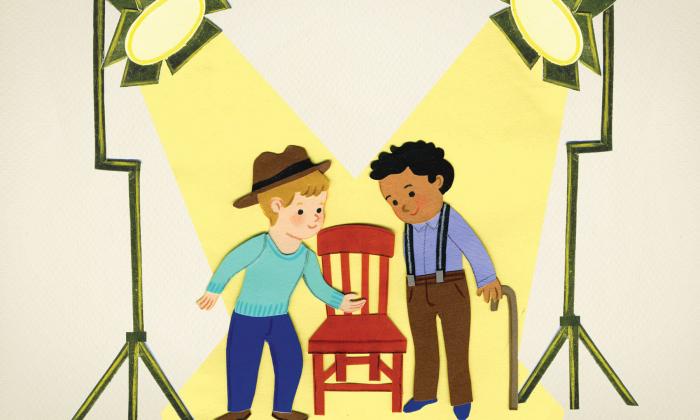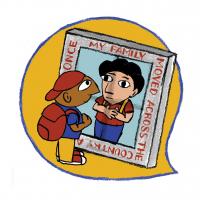Role-playing enlivens the classroom.
LIGHTS! CAMERA! LEARN!
Why role-play? Role-playing stimulates and deepens authentic learning by asking students to adopt another person’s identity and experience while increasing their own self-awareness. The verbal, physical and intellectual demands of role-playing sharpen communication skills and foster development of the psychomotor, cognitive and emotional learning domains. Best of all, students are likely to remember the content knowledge they learn through role-playing because they’re having FUN!
Put role-plays to work!
Role-playing isn’t just about simulating scenarios. This interactive strategy
can be tailored to meet a variety of classroom needs.
Model Behavior
Role-play can help establish classroom patterns and routines. Use role-play to model …
- how to use classroom resources (check out a library book, walk to the restroom, use technology).
- how to respond to conflict.
- how to take turns.
Develop Skills
Role-play can promote social emotional skill development by …
- exposing students to different interactive scenarios.
- encouraging students to practice a variety of verbal response skills.
- emphasizing problem solving and teamwork.
Involve Observers
Role-play can be a valuable learning experience for those looking on, too. Be sure to …
- provide context for the observers as well as the role-players.
- discuss observers’ reactions, and note the diversity in responses.
Storytelling honors student experience.
Why invite students to tell their stories?
 Storytelling invites students to bring their identities and expertise into the classroom. This practice upends the traditional “sage on the stage” dynamic, interrupts stereotypes and fosters intergroup awareness. Giving students space to talk about personal experiences can also help them alleviate stress—whatever the source.
Storytelling invites students to bring their identities and expertise into the classroom. This practice upends the traditional “sage on the stage” dynamic, interrupts stereotypes and fosters intergroup awareness. Giving students space to talk about personal experiences can also help them alleviate stress—whatever the source.
Stories are windows and mirrors.
“The window becomes a mirror! And it is the shared humanity of our conversation that most impresses us even as we attend to our different frames of reference.”
–EMILY STYLE
Stories encourage understanding.
“Conversations about human sameness and difference can take place during many teachable moments throughout the day.”
–LOUISE DERMAN-SPARKS AND JULIE OLSEN EDWARDS
Stories break down barriers.
“Listening to the stories of those who see the racial dynamic and talking about it is healing and represents a greater demonstration of ethical civility.”
–HOWARD STEVENSON
Bring storytelling into your classroom three ways.
- Create regular mini-opportunities for students to share their experiences with classmates.
- Encourage students to tell stories that counter existing narratives.
- Facilitate Serial Testimony, a sharing method developed by Peggy McIntosh. (To learn more about Serial Testimony, see the toolkit for “Beyond the Knapsack” in our Spring 2014 issue.)



0 COMMENTS